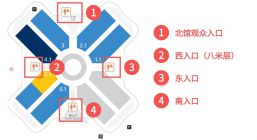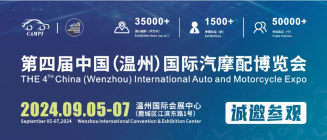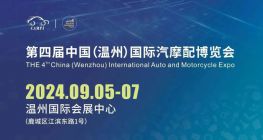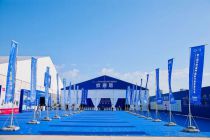Scan QRCode

At the end of 2023, the new energy vehicle market in China and even globally remained bustling: new models, technologies, and electrical architectures represented by Xiaomi emerged one after another; Various scheduling, verbal battles, and competition over testing standards are constantly ongoing. Peeling away the complex and fragmented information, the author vaguely sees two technological paths regarding power batteries going deep into the distance: one is sodium ion batteries, and the other is solid-state lithium batteries. Two new power batteries will help new energy vehicles move towards the 2.0 era. In the process of this new era, Chinese brands will still be in a leading position, with the most prominent positions being GAC Aion, CATL, and BYD.
The United Nations CO28 Climate Conference, which ended in December 2023, did not provide clear consensus and guidance for global environmental action in the new year. However, the pace of accelerating fossil fuel substitution is quietly accelerating, with the popularity of electric vehicles being the most noticeable change visible to the naked eye.
According to the analysis data released on the official website of the United Nations Trade Development Organization, the internal combustion engine in motor vehicles causes about 15% of carbon dioxide emissions annually, and the energy efficiency of electric vehicles (77%) is also much higher than that of gasoline vehicles (15%). But to gradually phase out internal combustion engines, it is necessary to achieve electrification of transportation, which in turn requires an unprecedented number of batteries. Cui Dongshu, Secretary General of the Joint Conference on Passenger Cars, stated last year during an online live broadcast of the 2023 China New Energy Vehicle Three Electric System Quality Performance Research Conference on Chezhiwang that China's annual automobile production will smoothly exceed 30 million units and stabilize at the next level of 40 million units. In the incremental growth of the Chinese automotive market, the vast majority are pure electric BEVs and hybrid models, which means there will be a demand for millions of sets of automotive power batteries. The Financial Times cited the analysis firm Benchmark Mineral Intelligence in an article stating that by 2030, China will have 69% of global battery production capacity, down from 78% in 2022, but still be able to meet the battery production needs of 90 million cars annually. By contrast, it is expected that by 2030, Europe and the United States will each account for about 14% of global production capacity, enough to assemble 19 million cars each, and the development gap with China remains huge.
But now there is a problem looming before the wave of electric vehicles, which is the development space of existing lithium batteries. How to make more efficient, cheaper, and safer batteries support the sustainable development of clean energy transportation for humanity? At least when I wrote this review article in January 2024, we had two paths for commercialization: sodium ion batteries and solid-state batteries that replace liquid fuels. Considering the technological maturity and commercial cost of liquid hydrogen fuel and hydrogen fuel cells have not yet made breakthrough progress, the next stop for new energy vehicles is likely to be at the intersection of these two paths.
The Future of Sodium Ions
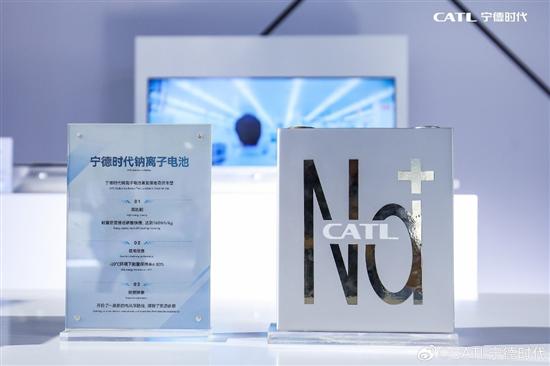
Image source: Ningde Times official Weibo account
When it comes to sodium ions, we cannot ignore Northvolt from Sweden. The European industry generally believes that this company and its sodium ion technology may be the biggest hope for Europe to compete with the dominant battery companies in China, South Korea, and Japan. According to reports, the company has started producing lithium-ion batteries for cars and trucks at a factory located in the Arctic Circle of Sweden, and plans to build three more factories in Canada, Germany, and Sweden.
According to existing research results, sodium ion batteries can work better under both high and low temperature conditions. Therefore, compared to lithium batteries widely used for energy storage, sodium ion may be a cheaper and safer material compared to lithium. However, compared to their size, the energy that sodium ion batteries can generate has long lagged behind lithium batteries. Electric vehicles powered by sodium ion batteries either have to be smaller or have larger battery packs, which makes sodium ion batteries currently impractical for most space limited electric vehicles.
Northvolt publicly stated at the end of last year that it had verified the critical level of a sodium ion battery, which is 160Wh/kg, an energy density close to that of lithium batteries commonly used for energy storage. At present, the energy density of lithium batteries used in electric vehicles is as high as 250 to 300Wh/kg, which is still the industry average.
Some European experts even wrote that Northvolt has gone further than many strong Chinese competitors, such as CATL, the world's largest battery manufacturer, although it uses oxides containing metals such as nickel, cobalt, or manganese in sodium ion batteries. The use of these metals makes them more expensive and safer, but there is still a gap compared to their Swedish counterparts because they may catch fire at lower temperatures and are at a disadvantage in efficiency.
According to overseas media reports, Northvolt's sodium ion batteries use Prussian blue, a pigment with great potential in improving battery chemistry, although it was already an invention in the last century. This company also claims to provide customers with the first batch of samples this year and will achieve full load production by the end of the 1920s. However, analysts in the industry are concerned that its production scale and investment are both challenges in the future, as it needs more new factories in addition to the four factories currently planned to produce lithium-ion batteries for automobiles.
Furthermore, when it comes to sodium ion batteries, the distant commercialization and the continuous decrease in the cost of lithium batteries are both bad news. Therefore, the cost of time delay may be the biggest obstacle on its popularization path. The potential success of sodium ion batteries will depend on the price of lithium batteries and how quickly manufacturers such as Northvolt can promote this new technology. Due to the global trend of investment flowing towards electric vehicles and the full exploitation of lithium mines, the price of lithium batteries has been declining in recent months.
"Investors' enthusiasm is not as good as last year, and some future developments in the sodium ion supply chain may be delayed or even cancelled," said the head of a European automotive consulting firm
"Investors' enthusiasm is not as strong as last year, and some future developments in the sodium ion supply chain may be delayed or even cancelled," said the head of a European automotive consulting firm when talking about producing sodium ion batteries. "The low price of lithium makes the cost-effectiveness of sodium ions less apparent."
When it comes to sodium ions, there is an undeniable fact that Western analysts have overlooked, which is that Chinese peers are not absent from the research and development of sodium ions. At present, industry academia research institutions such as CATL, GAC Aion, BYD, and Central South University are all synchronously developing sodium ion batteries. Moreover, in the relatively mature Chinese electric vehicle market, the rich application scenarios and the expansion of consumer demand will greatly improve the speed of commercialization of sodium ion batteries, thereby narrowing or even surpassing the advantageous position of Swedish companies such as Northvolt, And accelerate the promotion process of sodium ion batteries in the global market.
Competition in solid-state batteries
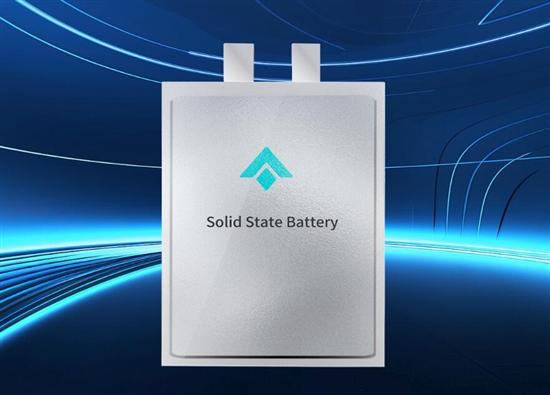
Image source: Official Weibo account of GAC Aion
When it comes to automotive batteries for this year and even the next five to ten years, the first thing that comes to mind is not sodium, or other options similar to lithium on the periodic table, but solid-state lithium. Toyota should be at the forefront in this regard, but recently there have been some concerns in the industry. The popularity of Toyota's solid-state lithium batteries is also significantly decreasing, and the industry seems to have placed Toyota on the page that still needs to be observed.
Analysts such as Morgan and Merrill Lynch agree that Toyota is investing heavily in battery technology - both existing lithium-ion batteries and next-generation solid-state batteries - and hopes that by 2025, all Toyota and Lexus models worldwide will be equipped with electrification options. The company also has a plan to sell 3.5 million battery powered cars annually starting from 2030. However, analysts also stated that the group currently expects pure electric vehicle sales to be only 123000 units this fiscal year, lower than the previous target of 202000 units, due to reduced expectations for Chinese demand. Although its electric vehicle joint venture with BYD has already taken off, it seems that apart from compensating for the passive situation of negative points brought about by China's dual point policy, it cannot reverse the decline in sales. At the same time, Lexus, which announced that it will no longer produce pure fuel vehicles (most of which are still hybrid vehicles) by 2025, cannot find strong growth points in the Chinese market. If you see a pure electric version of Lexus on the street, it is almost a chance of winning the prize.
However, solid-state batteries are indeed the only opportunity for Toyota to make a comeback, so we cannot make a judgment on the success or failure of solid-state batteries until this critical milestone arrives in 2027. At least in today's world where lithium batteries are the main cathode material for power batteries, they may be the closest development direction to the future. So we see that even facing negative factors such as low yield and high production costs, there is an increasing number of competitors moving forward and even keeping pace with Toyota. Among them, the most impressive one is none other than GAC Aion!
On November 20th last year, GAC Aion Laboratory announced the completion of interface modification technology testing and verification for solid-state batteries, and announced new technological breakthroughs. This technology will reduce the lifespan degradation of solid-state batteries by 50%, and after 150 cycles, the battery capacity can remain above 90%. At the previous press conference of GAC Group, GAC Aion officially announced that it will achieve mass production and installation of all solid-state batteries in 2026, and the new brand Haobo will be the first to adopt it. According to the information provided by GAC Group to the author, GAC Aion Laboratory induces the formation of an interface buffer layer on the negative electrode surface through a special design of solid electrolyte composition, which can effectively reduce interface impedance and improve interface stability. Solved the problems of high contact impedance and poor stability caused by "solid solid contact" at the interface of conventional solid-state batteries, as well as the further problems of severe power attenuation and shortened lifespan caused by it, thus achieving a breakthrough in solid-state batteries from laboratory to mass production applications. In experimental testing, the capacity of conventional solid-state batteries significantly decreased to 80% after 150 cycles; And adopt
In fact, during my visit to GAC Aion last year, I learned from the introduction of General Manager Gu Huinan that GAC's battery technology layout has formed sufficient reserves for building high walls and accumulating grain. They have included solid-state batteries, cobalt free batteries, low cobalt batteries, sodium ion batteries, and other key technological breakthroughs. Of course, the most exciting aspect of this is the breakthrough progress made in solid-state batteries. The person in charge of the Guangzhou Automobile Group News Center said, "Our solid-state batteries can still meet the safety and reliability requirements of batteries in extreme environments even when the energy density of the battery cells reaches 400Wh/Kg. This is also our confidence in announcing plans to achieve vehicle installation and installation in 2026."
The reason why GAC Aion has such lofty aspirations is not because the technology of one or two batteries is advanced, but because of its overall technological research and development reserve capacity. It can be said that solid-state batteries are not alone, they are already full of spring scenery behind them. At present, in addition to solid-state batteries, GAC Aion also holds a large amount of battery technology reserves and first mover advantage technologies. For example, its sponge silicon negative electrode battery reduces the volume of lithium-ion batteries by 20%, reduces weight by 14%, and the energy density of battery cells can reach 280 Wh/kg. It has been installed on GAC Aion AION LX and is the world's first pure electric vehicle with a range of over 1000km. For example, its newly released P58 microcrystalline power cell has become widely recognized as the strongest in the world, with needle punched cells that do not even emit smoke. In this regard, GAC Aion is indeed more confident than Toyota, which only has one bottom card, and even other domestic peers. At least in terms of BEV sales in 2023, it only ranks behind BYD and Tesla. This allows Aion to develop more advanced battery technology with a business logic loop, which has strong persuasiveness for investors and the direct financing market.
Of course, in the competition of future battery technology, Aion is not alone. The strong players of Chinese electric vehicles are forming a situation of mutual cooperation and staggered flying together. In 2024, both CATL and BYD will focus on sodium ion, semi-solid, and all solid lithium batteries. For example, CATL will fully commercialize sodium ion and semi-solid batteries this year, while BYD will also test install all solid lithium batteries in 2025, and release new pure electric platforms and new pure electric vehicle models equipped with all solid lithium batteries in 2026. However, it is worth mentioning that compared to CATL's semi-solid state batteries and the current gap in domestic application materials, GAC Aion's breakthrough should be the closest domestic manufacturer to Toyota in the direction of battery commercialization. Due to previous estimates that the gap between China's solid-state batteries and Toyota was about five years, Aion's breakthrough significantly shortened the already short time distance. This has also added more confidence to the continued consolidation of the position of the national automotive industry in the field of new energy.
Returning to the author's point of view at the beginning of the article, whether it is sodium ions or solid-state lithium batteries, no matter what technology is used to drive the future of new energy vehicles, at least in the next five to ten years, the first group in the electric vehicle and power battery industry, which is in a leading position, can wear yellow
AMS2024 Exhibition Guide | Comprehensive Exhibition Guide, Don't Miss the Exciting Events Online and Offline
Notice on Holding the Rui'an Promotion Conference for the 2025 China (Rui'an) International Automobile and Motorcycle Parts Exhibition
On September 5th, we invite you to join us at the Wenzhou Auto Parts Exhibition on a journey to trace the origin of the Auto Parts City, as per the invitation from the purchaser!
Hot Booking | AAPEX 2024- Professional Exhibition Channel for Entering the North American Auto Parts Market
The wind is just right, Qianchuan Hui! Looking forward to working with you at the 2024 Wenzhou Auto Parts Exhibition and composing a new chapter!
Live up to Shaohua | Wenzhou Auto Parts Exhibition, these wonderful moments are worth remembering!
Free support line!
Email Support!
Working Days/Hours!
